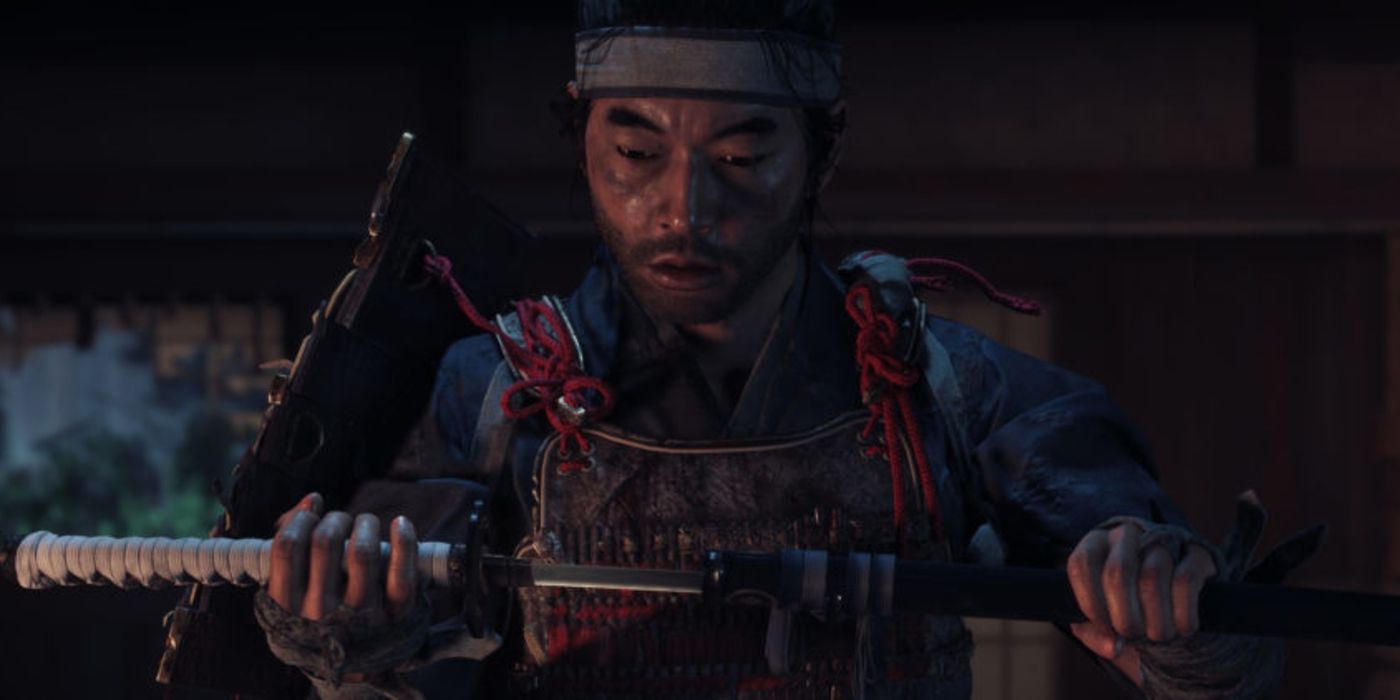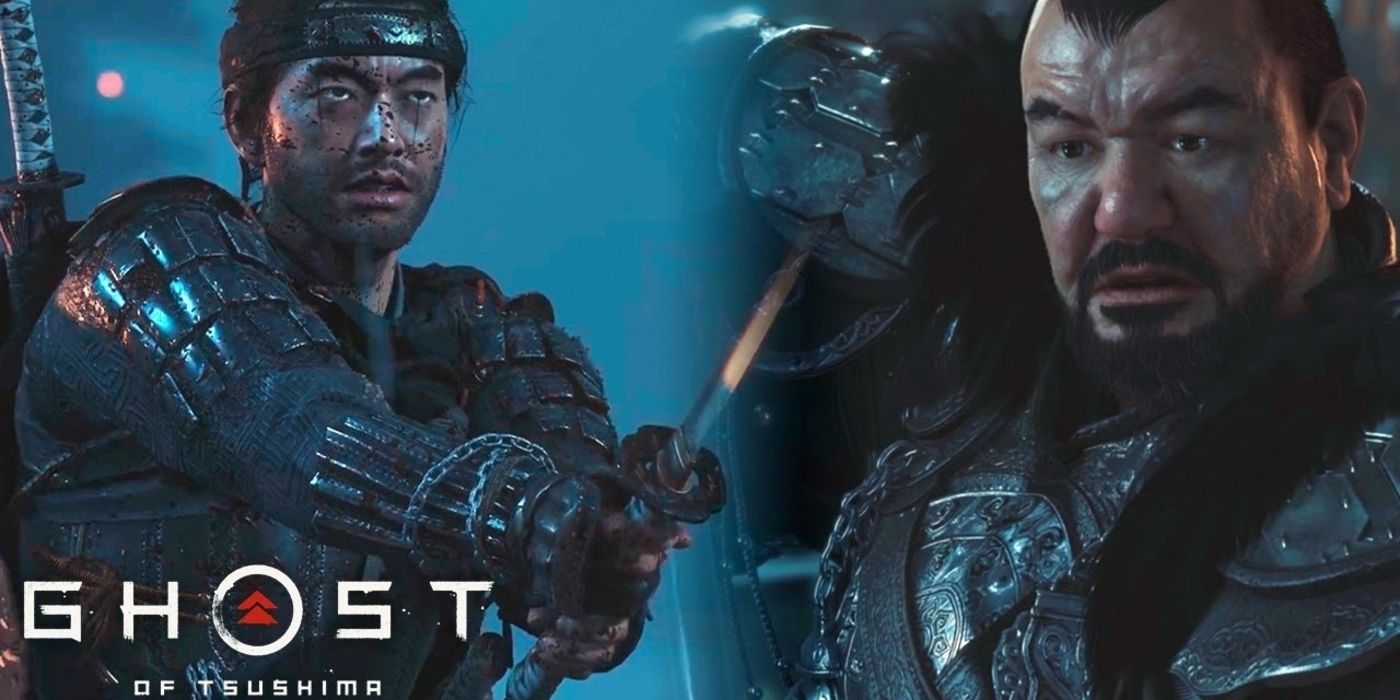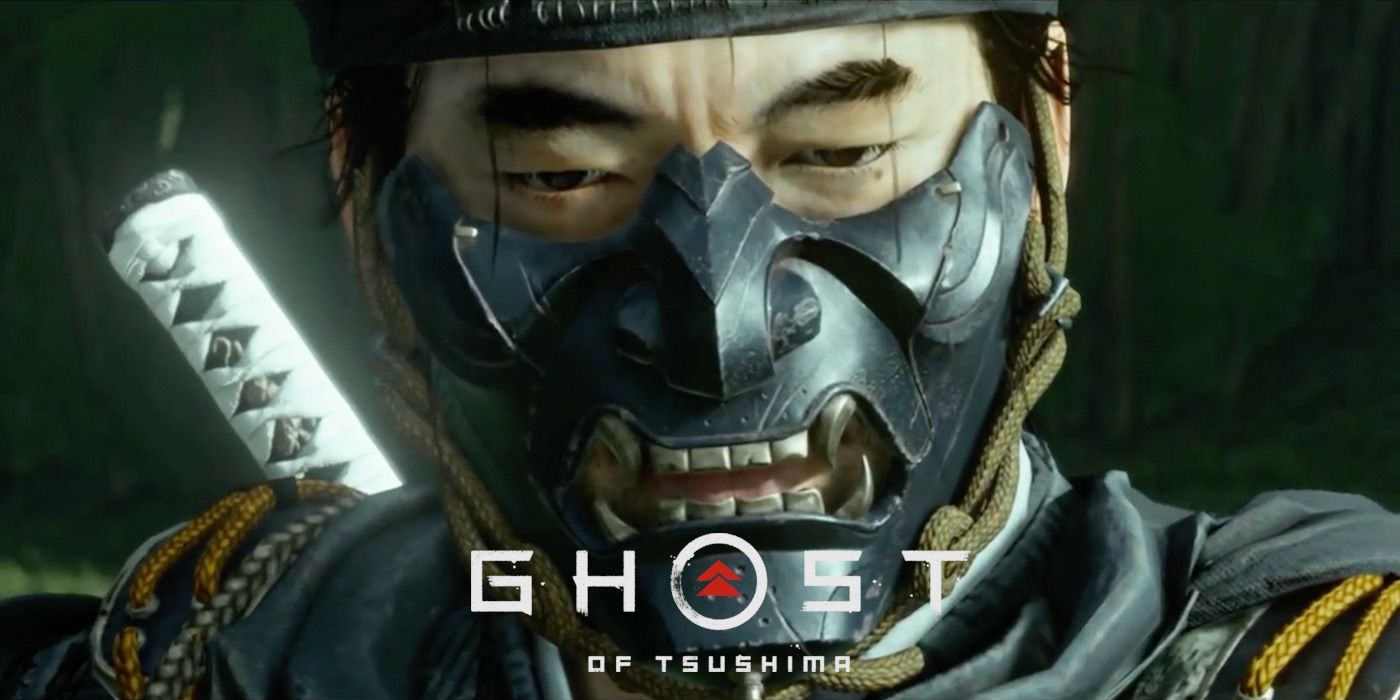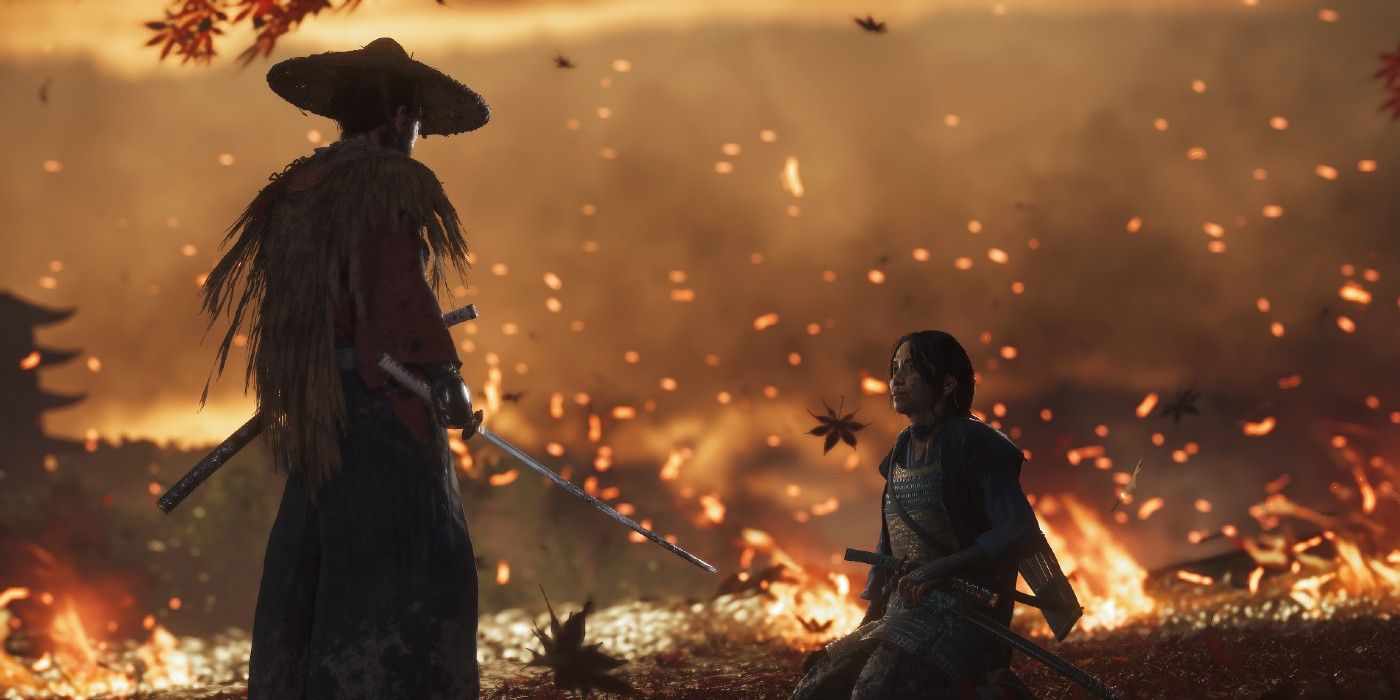Ghost of Tsushima on Lethal with No Upgrades is a True Test of Patience and Skill

Early on in the prologue of Ghost of Tsushima, players are put in a one-on-one duel with the big bad Khotun Khan himself in what is ultimately a hopeless endeavor. It is impossible to beat Khotun Khan at the beginning of the game, no matter how skilled the player is, as even if they run out of hit points, the fight will go on until the player drops. Throughout the rest of the story, Jin grows substantially more powerful as he learns new techniques, gets new equipment, and finds charms throughout the island of Tsushima, making his eventual rematch with the Khan much more of a fair fight, but what happens if all of that growth is stripped away?
Ghost of Tsushima is an incredible title, and because of this many fans have been playing through the game more than once even after getting the platinum trophy and doing all there is to do in it. Naturally, players may want to spice things up a bit, and one extreme way to do that is to play through the entire game on the hardest difficulty without upgrading Jin at all. While this may sound impossible, it is achievable but requires immense levels of patience and practice.

The most extreme variant of this challenge run involves trying to beat the game with the bare minimum. This means the player must only use the Broken Armor that Jin starts with throughout the whole game, cannot upgrade their swords or other equipment, should not spend technique points on any upgrades, and may not equip any charms found during their playthrough. Furthermore, exploration outside of the main quest is off limits, meaning no mythic tale rewards, health boosts from hot springs, or resolve gains from bamboo strikes.
Of course, different levels of difficulty can be achieved simply by removing some of these restrictions, as the full list is incredibly harsh (though that's kind of the point). To alleviate this, players will gain a small amount of health and resolve from growing their legend and are allowed to use anything they gain from the main story, including Ghost of Tsushima's half bow, all of the ghost weapons, and the lethal poison blowgun. It should also be said that the game forces the player to spend the first technique point they get on either dodge roll or perfect parry, but which of these the player goes with is entirely up to them.

With all of these restriction, players will quickly find themselves outmatched in even the most basic of encounters. Unarmed bandits will prove deadly if even one mistake is made, and as such, extreme tactics are often required. When Jin is at such a huge disadvantage, the player will be forced to think outside the box and use everything available to them. This should promote the use of Ghost of Tsushima's more niche mechanics such as beehives, exploding barrels, fire braziers, and certain ghost weapons like the windchimes.
Additionally, stealth becomes absolutely paramount to survival. On a normal playthrough, players can often charge headfirst into a fully manned fort and walk out leaving a trail of Mongol bodies behind them, but that kind of tactic won't work this time around when even one hit is enough to instantly kill the player. Taking out as many enemies as possible from stealth will prove vital to the player's success, and missions where stealth isn't an option are often the most difficult. Thankfully, in these cases, players are usually fighting alongside allies, and staying near these friends can make seemingly unwinnable fights conquerable.

Ghost of Tsushima does not shy away from violence and brutality, but rather shows it openly and uses it to further the narrative. Few can forget Jin's first, visceral assassination, as a once honorable Samurai finds himself rolling around in the muck while stabbing his foe repeatedly. That said, this playthrough will subject the player to a lot more of this in some interesting ways. It goes without saying that players will die a whole lot more when playing like this than usual, and each death is accompanied by Jin being harshly executed by his enemies.
Likewise, Jin's methods of killing enemies remain primitive, as the player can't upgrade the Tanto as normal. Once fully upgraded, Jin's assassination's become precise and methodical, a swift stab to the neck, but without those upgrades each one resembles that first cutscene, with Jin really getting his hands dirty. Players will also be pushed to use more brutal methods often, such as poisoning tough enemies with the blowgun or setting groups of enemies ablaze and watching them burn. In truth it depends on each player's natural playstyle, but those that preferred the more honorable routes on their first playthrough may find themselves shocked at what Jin is capable of as the Ghost.
Spoilers for Ghost of Tsushima's story ahead. Without a doubt, the most challenging aspect of this run is the duels, of which there will be five in total if the player avoids all side quest material. First Jin will come to blows with Ryuzo at the end of Act 1, then with Temuge partway through Act 2, Ryuzo again towards the end of Act 2, Khotun Khan in the second to last mission, and then finally Lord Shimura at the very end of the game. Expect to spend a lot of time here.
Unlike the rest of the game, Ghost of Tsushima's duels restrict players so they can't rely on allies, ghost weapons, or underhanded tactics to win these fights, they must instead rely only on their wits and their sword. For each of these duels, a single hit will be enough to force a restart, so players will need to try repeatedly until they manage to get a perfect run. It helps to use the proper stance against each enemy, and as a general rule, players should play very aggressively against shield-users like Temuge, very defensively against Khotun Khan and his glaive, and strike a nice balance when clashing with Ryuzo and Shimura's swords.
Ghost of Tsushima is available now exclusively on PS4.
 Reviewed by Unknown
on
August 16, 2020
Rating:
Reviewed by Unknown
on
August 16, 2020
Rating:

Post a Comment